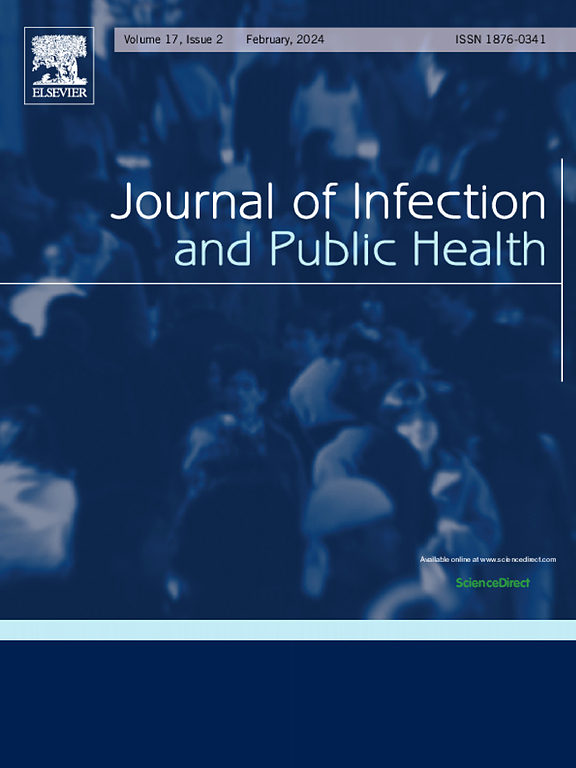The impacts of SGLT2 inhibitors on the mortality of patients with tuberculosis
IF 4.7
3区 医学
Q1 INFECTIOUS DISEASES
引用次数: 0
Abstract
Background
Tuberculosis (TB) is a widespread infectious disease and is associated with high mortality if not effectively treated. We studied the influence of sodium-glucose cotransporter 2 inhibitors (SGLT2-i) on mortality in patients with TB.
Methods
We retrospectively recruited patients with new-onset TB from the National Health Insurance database from 2017 to 2020. The association between the one-year mortality in patients with TB and the use of SGLT2-i was analyzed by using Cox proportional hazard regression.
Results
A total of 34,820 patients with new-onset TB were identified in the period studied. We classified those with use of SGLT2-i (n = 345) and matched a 4-fold cohort of 1380 patients without use of SGLT2-i (n = 1380) by a propensity score method. Times to death averaged 6.2 and 4.6 months in the SGLT2-i group and non-SGLT2-i group, respectively (p = 0.0150). Mortality within 1 year was higher in the non-SGLT2-i group (17.5 % vs. 8.1 %, p < 0.0001) than in the SGLT2-i group. The adjusted hazard ratio (AHR) of one-year mortality was significantly lower in patients with total SGLT2-i use (0.42 [0.28–0.63]) and in those with high-dose SGLT2-i use (0.10 [0.03–0.33]) than in the non-SGLT2-i group.
Conclusions
SGLT2-i might improve mortality outcomes for patients with TB with a dose response. Although further prospective clinical trials to validate this possibility are needed, the use of SGLT2-i in patients with TB might be considered in the absence of contraindication.
求助全文
约1分钟内获得全文
求助全文
来源期刊

Journal of Infection and Public Health
PUBLIC, ENVIRONMENTAL & OCCUPATIONAL HEALTH -INFECTIOUS DISEASES
CiteScore
13.10
自引率
1.50%
发文量
203
审稿时长
96 days
期刊介绍:
The Journal of Infection and Public Health, first official journal of the Saudi Arabian Ministry of National Guard Health Affairs, King Saud Bin Abdulaziz University for Health Sciences and the Saudi Association for Public Health, aims to be the foremost scientific, peer-reviewed journal encompassing infection prevention and control, microbiology, infectious diseases, public health and the application of healthcare epidemiology to the evaluation of health outcomes. The point of view of the journal is that infection and public health are closely intertwined and that advances in one area will have positive consequences on the other.
The journal will be useful to all health professionals who are partners in the management of patients with communicable diseases, keeping them up to date. The journal is proud to have an international and diverse editorial board that will assist and facilitate the publication of articles that reflect a global view on infection control and public health, as well as emphasizing our focus on supporting the needs of public health practitioners.
It is our aim to improve healthcare by reducing risk of infection and related adverse outcomes by critical review, selection, and dissemination of new and relevant information in the field of infection control, public health and infectious diseases in all healthcare settings and the community.
 求助内容:
求助内容: 应助结果提醒方式:
应助结果提醒方式:


